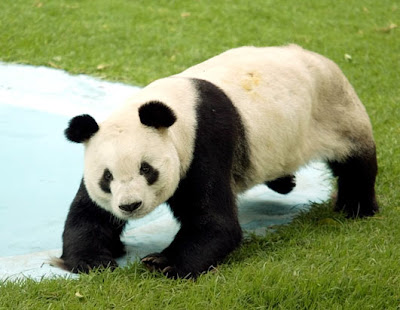The Life of Animals | Panda | maybe in your house have the same doll with these animals, because usually the girls are very fond of this animal because of its cute, the color is just adorable, want to know? The following report
The giant panda is a black and white bear living in temperate-zone bamboo forests of central China. As one of the rarest animals on the edge of extinction, it stands for the species endangered and conservation efforts to protect them.
Giant pandas once inhabited in lowland areas, but with the development of farming and forestry, they have been forced to mountains of Sichuan, Shaanxi, and Gansu.
Giant pandas prefer to live in broadleaf and coniferous forests with dense bamboos, at altitude between 5,000 and 10,000 feet, which areas are bathed all year around by mist and rain.
A giant panda looks like the bear in shape. It has a white coat apart from the black near ears, eye patches, muzzle, legs, and shoulders. Some scientists say that such coloring offered effective camouflage when they were in shade-dappled snow and rock surroundings. The panda's coat helps to keeps warm. Giant pandas have molar teeth and a large jaw for chewing bamboo. Many people may think the animal cute, but a giant panda can be dangerous as any other type of bear.
About the size of the American black bear, the giant panda can reach four to six feet tall. Males are larger than females. The wild male panda can weigh up to 250 pounds. Females rarely reach 220 pounds.
The giant panda is listed by the World Conservation Union's (IUCN's) Red List of Threatened Animals as an endangered species. About 1,000 pandas live in the wild, about 140 in zoos or breeding centers, mostly in China. Scientists don't know yet the natural life of pandas that live in the wild conditions, but they are sure they have a shorter life than those kept in artificial conditions. Chinese scientists have reported zoo pandas of 35 years old.
A wild giant panda lives almost exclusively on bamboo. On very rare occasions they also eat grasses and small rodents or musk deer fawns. In zoos, the diet of giant pandas includes bamboo, sugar cane, gruel, carrots, apples, sweet potatoes, and a high-fiber biscuit specially made for them.
Adult giant pandas are often solitary. But they periodically communicate with each other with scent marks and sounds. Babies stay with their mothers for one and a half years to three years.
















